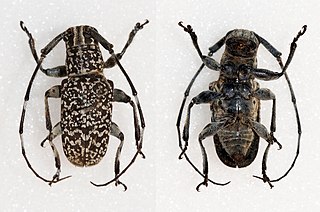
The Navigator Company is a Portuguese pulp and paper company.

True Love is an album by Toots & the Maytals. It is a collection of their classics re-recorded with guest artists including Willie Nelson, Eric Clapton, Jeff Beck, Trey Anastasio, No Doubt, Ben Harper, Bonnie Raitt, Manu Chao, The Roots, Ryan Adams, Keith Richards, and The Skatalites. The album was produced and conceived by Richard Feldman and released on the V2 label.

Kakia is the Greek goddess of vice and moral badness, abominations. She was depicted as a vain, plump, and heavily made-up woman dressed in revealing clothes, and was presented as the opposite of Areté, goddess of excellence and virtue.
Daniele Cacia is an Italian professional footballer who plays as a striker. He is a former Italy Under 19 international.

Lucas Alberto Simón García is an Argentine naturalized Chilean professional footballer who played as a striker.
Cacia is a civil parish in the municipality of Aveiro. The population in 2011 was 7,354, in an area of 35.75 km².

Mesosini is a tribe of longhorn beetles of the subfamily Lamiinae.

Cacia is a genus of longhorn beetles of the subfamily Lamiinae.
Cacia is a civil parish in Aveiro Municipality, Portugal.
Eunidia sexplagiata is a species of beetle in the family Cerambycidae. It was described by Stephan von Breuning in 1954.
Cacia elegans is a species of longhorn beetles of the subfamily Lamiinae.
Heteroclytomorpha sexplagiata is a species of beetle in the family Cerambycidae. It was described by Stephan von Breuning in 1939. It is known from the Solomon Islands.
Cacia guttata is a species of beetle in the family Cerambycidae. It was described by Per Olof Christopher Aurivillius in 1927. It is known from Java and Moluccas.

Cacia melanopsis is a species of beetle in the family Cerambycidae. It was described by Francis Polkinghorne Pascoe in 1866. It is known from Borneo and Malaysia.
Cacia inculta is a species of beetle in the family Cerambycidae. It was described by Francis Polkinghorne Pascoe in 1857.
Cacia butuana is a species of beetle in the family Cerambycidae. It was described by Heller in 1923.

Cacia vermiculata is a species of beetle in the family Cerambycidae. It was described by Heller in 1923. It is known from the Philippines.
Cacia semiluctuosa is a species of beetle in the family Cerambycidae. It was described by Émile Blanchard in 1853.

Cacia cretifera is a species of beetle in the family Cerambycidae. It was described by Frederick William Hope in 1831. It is known from Java, Cambodia, India, Myanmar, China, Nepal, Thailand, Laos, and Vietnam. It feeds on Berberis thunbergii and Albizia julibrissin.

Ramal do Porto de Aveiro is a railway branch in Portugal which connects the cargo terminal of Cacia to the Port of Aveiro. It was opened in March 2010.









